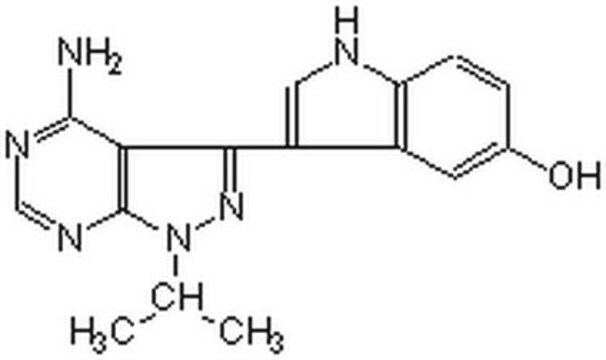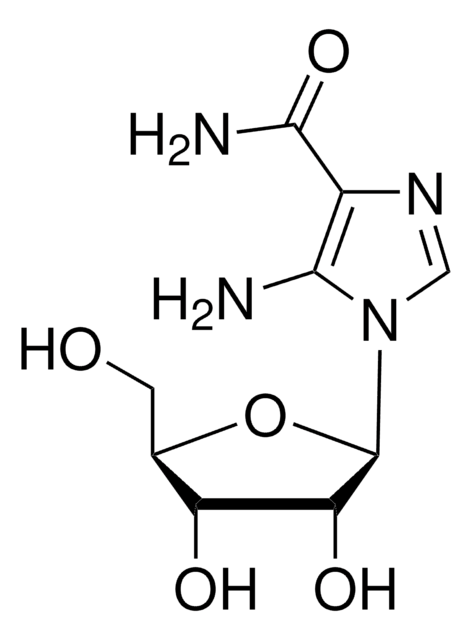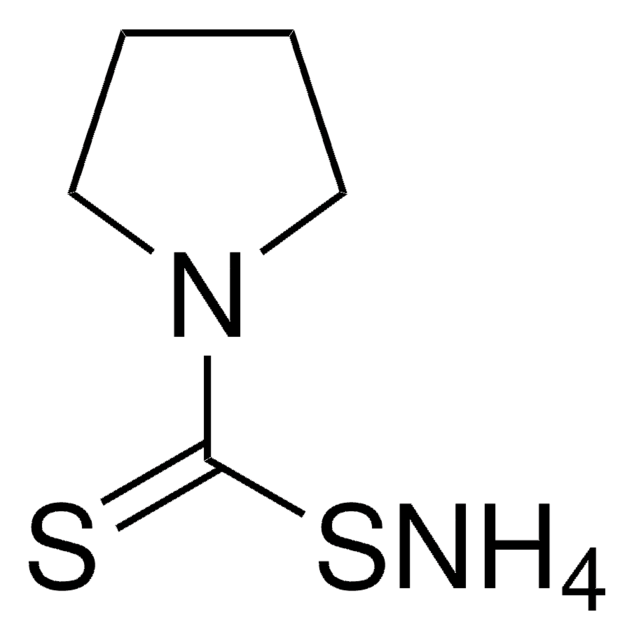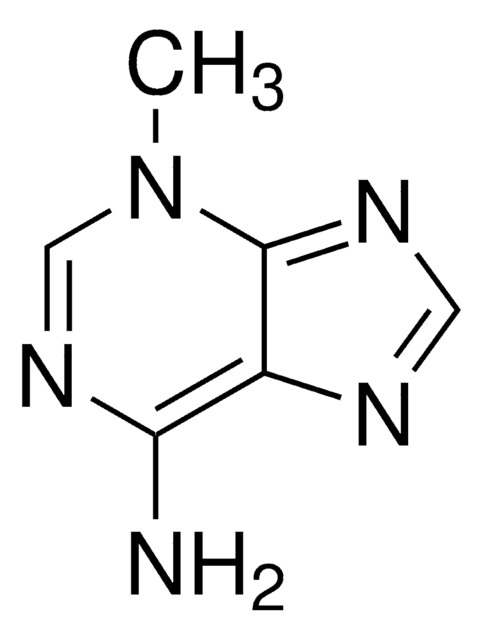P0037
PP242 hydrate
≥98% (HPLC), powder
Sinonimo/i:
2-(4-amino-1-isopropyl-1H-pyrazolo[3,4-d]pyrimidin-3-yl)-1H-indol-5-ol
About This Item
Prodotti consigliati
Livello qualitativo
Saggio
≥98% (HPLC)
Stato
powder
Colore
off-white
Solubilità
DMSO: >10 mg/mL
Temperatura di conservazione
2-8°C
Stringa SMILE
O.CC(C)n1nc(-c2cc3cc(O)ccc3[nH]2)c4c(N)ncnc14
InChI
1S/C16H16N6O.H2O/c1-8(2)22-16-13(15(17)18-7-19-16)14(21-22)12-6-9-5-10(23)3-4-11(9)20-12;/h3-8,20,23H,1-2H3,(H2,17,18,19);1H2
FMDOLJSFPXFBIL-UHFFFAOYSA-N
Applicazioni
- as a mammalian target of rapamycin (mTOR) inhibitor to study its effects on rat fibroblast mTOR complex 1 and 2 (mTORC1 & 2) signaling
- as an mTOR inhibitor to treat mouse embryonic fibroblasts (MEF) and cumulus cells (CCs) to study its effects on reactivation of embryonic nucleoli and ribosome biogenesis
- as a target of rapamycin (TOR) kinase inhibitor for the treatment of Arabidopsis to study its effects against Fusarium graminearum infection
Azioni biochim/fisiol
Caratteristiche e vantaggi
Codice della classe di stoccaggio
11 - Combustible Solids
Classe di pericolosità dell'acqua (WGK)
WGK 2
Punto d’infiammabilità (°F)
Not applicable
Punto d’infiammabilità (°C)
Not applicable
Scegli una delle versioni più recenti:
Possiedi già questo prodotto?
I documenti relativi ai prodotti acquistati recentemente sono disponibili nell’Archivio dei documenti.
I clienti hanno visto anche
Articoli
We present an article about how proliferating cells require the biosynthesis of structural components for biomass production and for genomic replication.
Protocolli
Sigma-Aldrich offers many products related to PKB/Akt for your research needs.
Il team dei nostri ricercatori vanta grande esperienza in tutte le aree della ricerca quali Life Science, scienza dei materiali, sintesi chimica, cromatografia, discipline analitiche, ecc..
Contatta l'Assistenza Tecnica.











